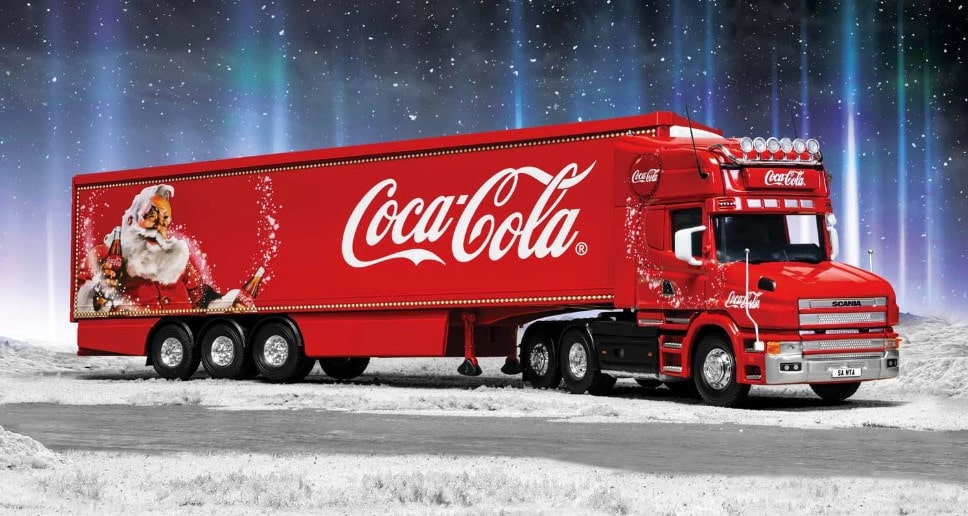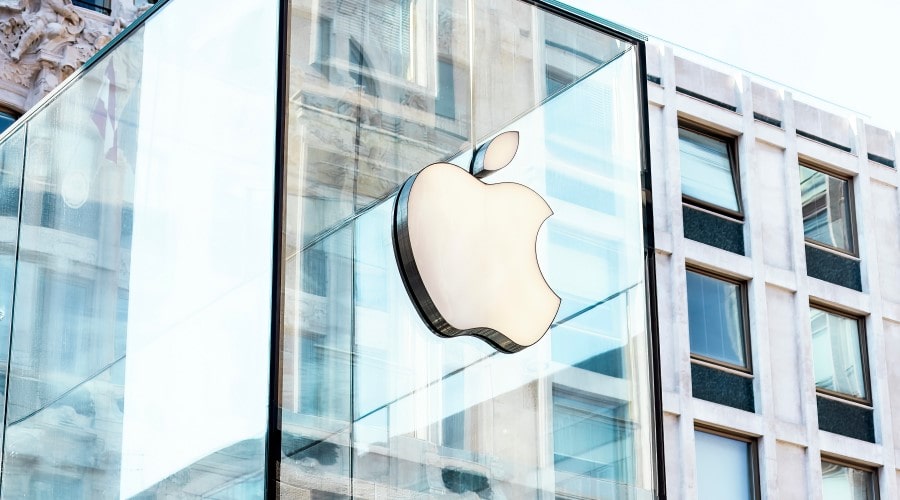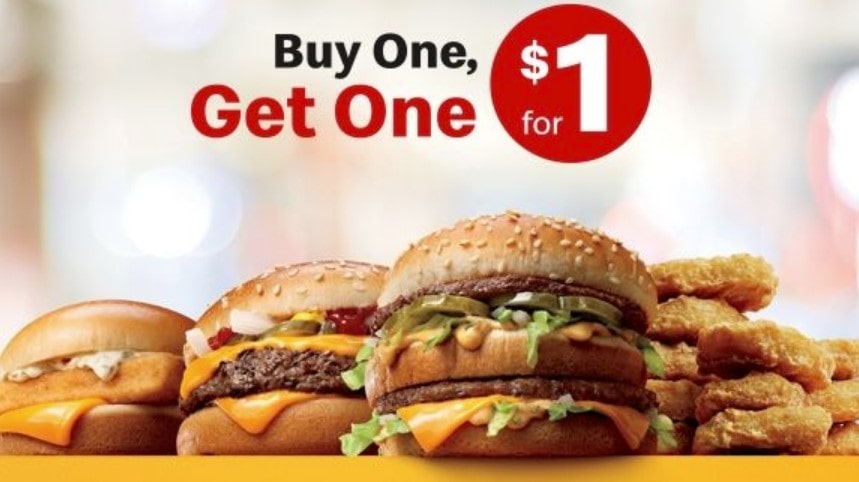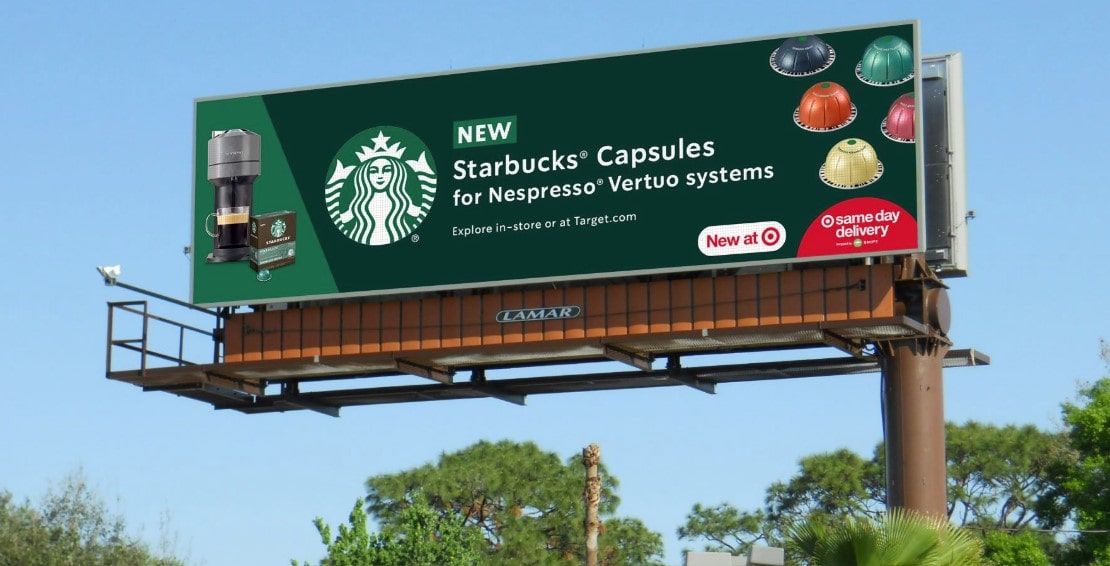Explore strategic marketing fully as we reveal the crucial difference between promotion and advertising. Although at first glance they may appear to be the same, there is more to these two drivers of a successful business.
Advertising, the long-term storyteller, creates a wider picture by creating brand identity and building long-lasting client relationships. Conversely, promotion serves as a brief, concentrated spotlight that, through specific reductions and exclusive offers, increases short-term sales. Their duration and goal differ most. A brand’s journey is built on strong foundations laid by advertising, but promotion immediately sparks consumer interest.
Examples of their many responsibilities are numerous:
- Rolls-Royce and other upscale automakers mostly depend on clever advertising to stay at the top of their class.
- Supermarkets run weekly sales to encourage customers to buy perishables quickly.
The ideal combination of the two will propel expansion while maintaining the integrity of the brand. The way to get there? Count on Plerdy, a leader in user experience and conversion rate optimization. Balancing and improving your advertising and promotion tactics with Plerdy will result in more conversions, improved UX, and eventually greater profitability. Check out Plerdy right now!
| Aspect | Advertising | Promotion |
|---|---|---|
| Definition | Advertising is a form of communication that aims to persuade potential customers to purchase or consume more of a particular brand of product or service. | Promotion involves informational and persuasive activities that increase the demand for a product or service, as well as direct inducements that offer added value or incentives to buy. |
| Objective | The main objective is to create long-term demand for the product or service and enhance brand recognition. | The main goal is to boost short-term demand and stimulate quick purchases by providing incentives like discounts or special offers. |
| Duration | Typically long-term and continuous. | Usually short-term and for a specific period. |
| Focus | Focuses on building brand image and creating a connection with the audience through repetitive exposure. | Focuses on immediate conversion and often targets existing customers with direct calls to action. |
| Examples | Television ads, billboards, print media, and online advertisements. | Coupons, sales contests, discounts, and special events like trade shows or exhibitions. |
Understanding Advertising
Within marketing, advertising is a multifaceted jewel. Its function is critical in trying to create curiosity, increase brand recognition, and influence how customers view a good or service. Consider the well acclaimed “1984” Super Bowl commercial from Apple. More than just a product display, it created an engaging story that positioned Apple as a trailblazing player in the IT industry.
Among the strategic components of effective advertising are:
- Innovative ideas that draw notice, such as the unconventional advertising by Old Spice.
- Consistency is keeping all of the channels’ message and design the same. Think of McDonald’s “I’m Lovin’ It” as a catchphrase that cuts over national lines.
- Targeting an audience means serving particular psychographics or demographics. Tesla, for example, attracts both techies and environmentally concerned customers.
Crucially, marketing is a long-term project rather than a passing gimmick. Its constant reverberation tries to imprint a good or service on customers’ memories. It makes use of several media, including television and billboards as well as internet media, to reach a broad audience. Though it might not push for quick sales like a campaign, advertising cultivates a relationship between the company and the customer that can blossom into loyalty and recurring sales.
Different Types of Advertising

In the extensive toolbox of marketing, advertising presents an array of types, each with its unique strengths. This assortment allows for precise alignment with varying product needs, brand ethos, and target demographics.
- Traditional Advertising: This age-old form involves print media, TV, radio, and billboards. Remember Coca-Cola’s Christmas truck? A classic TV advertisement etching the beverage brand onto the festive season.
- Digital Advertising: With the rise of the internet, businesses tap into this vast space, utilizing search engine ads, banner ads, and social media promotions. Nike, for example, masterfully exploits social media, creating engaging, share-worthy content.
- Guerrilla Advertising: Companies make a significant impact with unconventional, low-cost, and creative ideas, often in public spaces. IKEA’s installation of a furnished apartment inside a subway station in Paris stands as a great illustration.
- Native Advertising: This style blends seamlessly with the content of the platform on which it appears, like sponsored articles on a news site. Airbnb’s interactive guide on the Wall Street Journal website is an exemplary showcase.
Selecting the ideal type of advertising hinges on numerous factors such as budget, target audience, product type, and company objectives. Diverse as they are, these advertising methods serve the same goal – creating an impactful connection between a brand and its potential customers.
The Role of Advertising in Business

Advertising strides as a powerhouse in the business sphere, fulfilling multiple roles to bolster market presence, customer reach, and, ultimately, revenue generation. It’s the proverbial megaphone businesses use to communicate their unique selling proposition, connecting their products or services to their target audience.
Consider these pivotal roles advertising plays in business:
- Brand Building: Advertising crafts the narrative around a brand. Take Patagonia’s environmental campaigns – these aren’t just about selling outdoor gear, they establish the brand as a steward of the planet.
- Spurring Demand: Effective advertising can generate demand. Case in point, the De Beers “Diamonds are forever” campaign, which positioned diamonds as the ultimate symbol of love, driving global demand.
- Engaging Customers: Through creative storytelling and compelling visuals, advertising engages potential customers, prompting interest and action. The wildly successful “Dove Real Beauty Sketches” campaign showed Dove’s understanding of its customers, deeply engaging them.
- Competitive Advantage: Advertising offers a platform to differentiate from competitors. A prime example is Progressive’s use of Flo in their ads, setting them apart in a crowded insurance market.
The mastery of advertising can act as the fuel that propels a product from production lines to consumers’ hands, making it an indispensable aspect of a robust marketing strategy.
Pros and Cons of Advertising
Being an essential part of the company machine, advertising has advantages and disadvantages.
Advertisement Benefits:
- Broad Reach: Digital advertising in particular is cross-border. Consider Spotify, which reaches music lovers everywhere with digital advertising.
- Brand Awareness: Advertisers embed brands into the consciousness of consumers via constant messages. Consider the Nike adage “Just Do It.”
- Customer Education: As Apple’s thorough product-launch ads demonstrate, advertising educates consumers about the capabilities and advantages of products.
On the other hand, there exist drawbacks that should be taken into account:
- High Costs: Small firms may not be able to afford the astronomically expensive traditional advertising, such billboards and TV advertisements.
- Problems Measuring Impact: Long-term brand building via advertising is harder to measure than promotions with quick sales outcomes.
- Ad Fatigue: Constantly seeing advertising of this kind may cause consumers to get annoyed or disinterested, which could weaken the message.
It takes equilibrium. For example, Dove combines focused social media efforts for certain goods with endearing video advertisements for overall branding. Therefore, whilst being a powerful marketing tool, advertising needs careful planning and execution to handle its complexity and realize its full potential.
Understanding Promotion

One ever-changing element of the marketing mix is promotion. This high-octane approach seeks to generate sales quickly and elicit an instantaneous reaction from the buyer. The compelling competition or the tantalizing limited-time offer is what incites the sense of urgency.
Consider these promotion types, for example:
- Sales Promotions: Direct value to customers is provided by strategies like discounts or “buy one, get one free” offers. One yearly worldwide shopping event with mega-deals is Amazon’s Prime Day.
- Prizes and Contests: These try to draw in clients by providing them with an opportunity to win something worthwhile. Take the personalised bottle promotion from Coca-Cola, where customers who found bottles bearing their names could win a trip.
- Product sampling encourages customers to buy by providing them with a sample of the product. Contemplate Costco providing food samples in their locations.
Unlike advertising, which takes a long view, promotion concentrates on brief, effective campaigns meant to persuade consumers to buy right now. It’s the enticing limited-edition product release that fans wait in line for or the flash sale that sends you running to the store. With the addition of a promotion, prospective clients become committed buyers.
Different Types of Promotions
One of the most colorful aspects of marketing, promotion comes in all shapes and sizes, each suited to particular product categories, audience habits, and business goals. With these many strategies, one hopes to increase sales, pique consumer attention, and promote brand loyalty.
- Sales and Discounts: There’s an urgency created by promotions like early bird discounts or holiday sales. As worldwide phenomena, Black Friday and Cyber Monday encourage customers to grab amazing bargains.
- Free Samples or Trials: Often resulting in purchases, free samples or trials enable consumers try the product risk-free. A great example is still the one-month free trial offered by Netflix.
- Loyalty Programs: Companies give points, savings, or other benefits to loyal consumers. The free drinks and snack products offered by Starbucks’ loyalty program are a prime illustration.
- Combos of Products Lowering the total cost of several goods or services can raise perceived value and boost sales. Offering a variety of design and editing tools in one package, the Adobe Creative Cloud suite nicely demonstrates this idea.
- Giveaways and contests: Often with the promise of a substantial prize, these increase reach and encourage participation. This tactic is demonstrated by GoPro’s yearly photo competition, which asks participants to submit pictures shot with their cameras.
The same element runs throughout all of the tactics: promotions elicit instant action from the intended audience, boosting sales and brand engagement to unprecedented levels.
The Role of Promotions in Business
Promotions in the business setting have numerous purposes and operate as catalysts for fast client contact and sales. With the use of technology, businesses can achieve specific objectives such as cutting inventory, breaking into new markets, or boosting brand engagement.
- Inventory Control: Two methods that businesses help get rid of excess inventory are end-of-season sales and promotions. Fashion retailers like H&M frequently employ this strategy to make room for new lines.
- Customer Acquisition: Free trials and discounts are often what entice first-time buyers. Dropbox, for instance, swiftly grew by offering extra storage to consumers who referred friends.
- Programs that reward customers increase lifetime value and foster loyalty. Frequent flyer programs offered by airlines are a great example; customers of one carrier can get free flights or upgrades.
- Market Penetration: Companies might enter shady markets by cutting costs or providing bonuses. Uber quickly gained a market share by giving discount coupons to new riders.
Therefore, promotions are tactical instruments that enable businesses to strengthen customer relationships, accelerate sales, and spark market interest. Though these tactics might seem to be transient, their benefits can last a long time and support a business in its consistent growth and success.
Pros and Cons of Promotion
In marketing, promotion is a powerful instrument that can bring about great benefits as well as significant risks. The secret is to recognize its complexity so as to create successful plans.
Pros:
- Promotes Sales: A well-timed campaign has the ability to drive a sales boom. With its special savings, Amazon Prime Day quickly makes a ton of money.
- Increases Visibility: Giveaways and other promotions can greatly increase audience and raise brand exposure. The ‘Share a Coke’ campaign by Coca-Cola amply demonstrated this.
- Promotes Brand Loyalty: Customer loyalty can be long-term via reward schemes. A model is Sephora’s Beauty Insider program, which gives consumers points they may use to buy goods.
Cons:
- Erosion of the Profit Margin: Regular discounting could reduce profit margins, hence requiring careful balance.
- Quality Perception: Constant sales may cause consumers to doubt the quality of the products, therefore weakening the value of the brand.
- Short-Term Focus: While they may not maintain long-term customer engagement or loyalty, promotions frequently produce quick results.
Knowing these advantages and disadvantages helps companies use promotions strategically. They work well to increase awareness and sales right away, but careful use makes sure they don’t undermine the value of the brand or enduring customer connections. Promotions, then, are potent but they need to be a component of a well-balanced marketing strategy to guarantee long-term company expansion.
Key Differences Between Advertising and Promotion

Even although they are interwoven in the broad web of marketing, advertising and promotion have different functions and effects. How to interpret these differences depends on the intended audience, cost, time, and goal.
- Duration: Building a consistent brand presence, advertising works on a longer timescale. One classic is Nike’s “Just Do It” campaign, which has been ingrained in public consciousness for many years. Promotions, on the other hand, are usually transient and frequently timed to coincide with particular occasions, such Black Friday deals.
- Goal: By sowing the seeds of brand awareness, advertising creates customer preference. Conversely, a promotion encourages quick action, accelerating sales and product testing.
- Cost: Advertising needs a lot of money. These are best shown by the multimillion-dollar Super Bowl ads. In digital environments especially, promotions can be more economical even if they can be expensive.
- Aiming for wide reach, advertising usually targets a larger audience. Promotions could focus more on a certain demographic or current clientele.
Understanding these important differences helps one to negotiate the complex world of marketing. Every tool—promotional or advertising—has advantages of its own. Like a great conductor, the astute marketer arranges them in unison to produce success symphonies. In the great performance of corporate expansion, advertising and promotion work together as a perfect duet.
Choosing Between Advertising and Promotion: Factors to Consider
Choosing between advertising and promotion requires astute strategy – a dash of cunning, a sprinkle of intuition, and a hearty dollop of data-driven insight. Your business stage, budget, objectives, and target audience form the cardinal points guiding your decision.
- Business stage: Start-ups, eager to make their mark, may lean toward advertising to foster brand recognition. More established businesses might find promotional activities, such as loyalty programs, bolster repeat business and customer retention.
- Budget: Limited funds may nudge you toward promotions, which often provide more cost-effective solutions. If your coffers are brimming, splurging on a high-impact advertising campaign may prove a shrewd move.
- Objectives: Aspirations to build long-term brand value and awareness align more closely with advertising. Immediate sales boosts or offloading excess inventory usually calls for promotional muscle.
- Target Audience: Broad audiences might be best served by advertising’s wide-reaching tendrils. Meanwhile, targeted promotions can successfully cater to niche groups or specific demographics.
Each marketing tool, whether advertising or promotion, brings its unique rhythm and melody to your business’s score. An adept marketer choreographs them, conducting an enthralling performance that resonates with audiences and amplifies success. The choice ultimately circles back to understanding your product, your market, and your ultimate goals.
Case Studies: Successes in Advertising and Promotion

Examining a wealth of success stories reveals a dizzying variety of advertising and promotion tactics. Two stories in particular jump out: the “Real Beauty Sketches” advertising campaign from Dove and the promotion-based “My Starbucks Rewards” program from Starbucks.
2013 was Dove’s year to start a discussion about true beauty. Their plan came to pass as the “Real Beauty Sketches” campaign, an advertising phenomena that sparked debates about beauty standards and self-perception around the world. Dove deftly inserted their brand into a larger cultural setting by using this story to highlight their product line.
Starbucks, meantime, demonstrated the power of client involvement with their promotional effort, the “My Starbucks Rewards” program. Starbucks encouraged return business by awarding customers Stars for each purchase that could be redeemed for food and beverages. This marketing approach increased sales and fostered client loyalty.
Principal conclusions from these cases:
- Dove skillfully linked their products with a powerful social message, therefore leveraging the ability of advertising to create deep connections with a worldwide audience.
- Starbucks used a promotion strategy to promote exclusivity and reward customer loyalty, which increased revenue.
Both tactics, albeit taking different approaches, highlight the need of knowing your target market and using the right marketing tool—promotion or advertising—to attract and provide appealing value.
FAQ: Advertising vs. Promotion
- What is the main difference between advertising and promotion?
- Advertising is a technique used to create long-term awareness and demand for a product or brand. It is generally continuous and not limited to a specific time frame. Promotion, on the other hand, aims to boost immediate sales through short-term activities that provide incentives or added value.
- Can advertising and promotion be used together?
- Yes, advertising and promotion are often used together in marketing campaigns to maximize effectiveness. Advertising builds the brand while promotion drives the immediate response.
- Which is more cost-effective, advertising or promotion?
- The cost-effectiveness depends on the objectives. Advertising can be more expensive initially but builds value over time. Promotion often requires less upfront investment and can generate quick returns but may not have the lasting impact of advertising.
- How do I know which strategy to use?
- The choice between advertising and promotion depends on your marketing goals. For long-term brand building, advertising is preferable. For immediate sales boosts, promotions are more suitable.
Ending
This is your summary, succinct and very clear. Two aspects of marketing, advertising and promotion, are both fascinating and useful in their own right. Still remember the everlasting storyteller, advertising? Over time, it creates the story of the company, influencing opinions and fostering enduring relationships with consumers. Conversely, promotion is what starts a fire. All that matters is that timely offers encourage prompt purchases and ignite instant action.
While a single promotion on a learning platform like Coursera might promote a hot new course, YouTube channels investing in long-term advertising to build a loyal audience base. One can feel the difference.
You may fully utilize both tactics using Plerdy’s SEO & UX analysis tool. Imagine having all within your reach statistical insights, user behavior tracking, and user path analysis on your website. With Plerdy, you can optimize and perfectly balance both promotion and advertising. It’s time to market more effectively, promote intelligently, and see your company prosper. Get Plerdy now before this chance passes you by!
